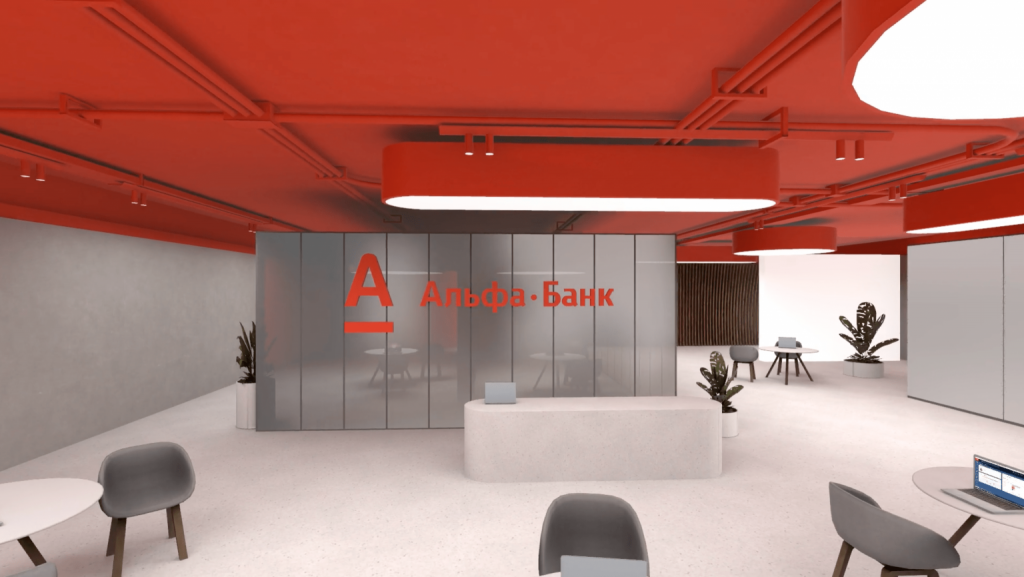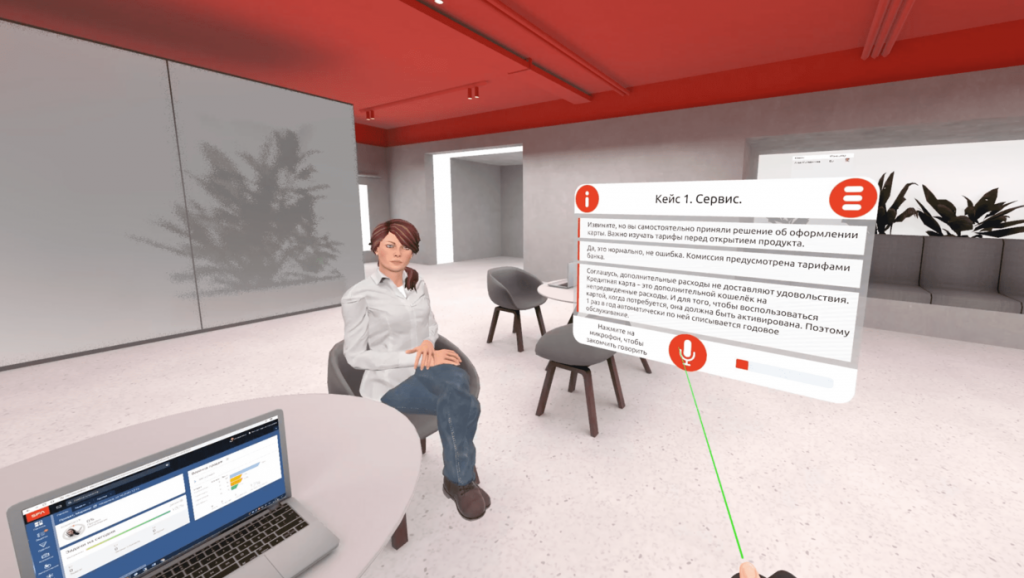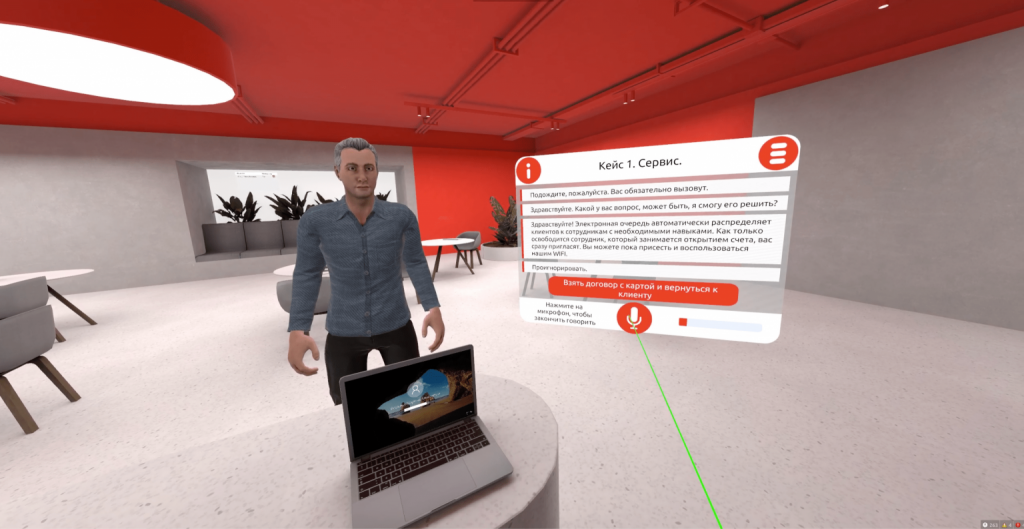Leading bank in CEE trains employees in VR
Onboarding new employees is expensive and time consuming. Alfa Bank, a leading bank in Eastern Europe has been searching for a way to reduce onboarding costs and increase the quality standards of its employees. They have approached Varwin to create a solution capable of adapting flexibly to changed circumstances and interact dynamically with employees.
High onboarding costs as main motivation
Alfa Bank onboards 1,200 trainees per year. The costs of onboarding these trainees is high, especially when considering the low performance of these recruits due to inexperience. Alfa Bank has been searching for a way to reduce the time required to train these talents and drive success for the bank while making the training more exciting and engaging. Varwin has been asked to create a VR environment with speech processing capabilities to simulate common customer interactions. We have created four scenarios according to the requirements and tested the success of the VR training on the first intake with overwhelming success.

The project requirements
Besides reducing the time needed to onboard these young talents, Alfa-bank desired to also achieve the following three objectives:
– to increase the sales volume of new hires in their first months,
– to increase the number of cross-sales of each trainee, and
– to increase customer loyalty.
Based on these project requirements, our developers have set up the roadmap to create a solution capturing all the necessary details. The main functionality, beyond covering specific use cases, was to analyse the answers given by the trainees. This required a sophisticated natural language processing algorithm to be trained based on the specific vocabulary in the banking industry.

Four customer scenarios to cover
Our client has already been using scripts to train its trainees and employees. Therefore, we were able to rely on these scripts to cover the following four customer scenarios:
- A client wants to close their credit card. The employee’s task is to dissuade them.
- The employee serves the client together with the trainee who makes a mistake. The task is to draw the client’s attention away from it and build a fruitful dialogue.
- The client is in a negative mood, because he has been waiting in queue. The task is to change anger into mercy and eventually opportunity.
- A client desires a credit card. The task is to offer him additional bank products beyond the credit card.
Challenge: People are different
The main challenge in this project was the customer environment. While the scenarios are rather straight-forward, customers in a real environment will initiate the conversation differently. These manifold ways customers provide clues about their needs are difficult to represent in a simulation. Nonetheless, our developers have analyzed customer behavior together with Alpha Bank to represent a varied number of details in the use cases. The detail richness of our solution ensures that trainees trained with the VR solution will be able to apply their knowledge in a wide range of situations with confidence.

A future-proof solution
Within two months, a team of XX people has developed the VR simulation. To achieve our objectives, we surveyed both customers and employees, created a comprehensive web application and onboarded the HR team of our client. The main objective hereby was to foster flexibility for the future use of the simulation. We have created the final product on our proprietary XMRS platform which allows our clients to adapt their simulations in the future without any coding knowledge.
A training environment as versatile as our client
The solution provided offers two modes, namely training and exam mode. While in training mode, employees will be able to see a list of possible answers to the respective situation and must speak out loud the one most appropriate in their understanding. The simulation then provides extensive feedback as to why an answer was right or wrong. While in exam mode, no answers are provided, and the trainee needs to answer by themselves with a suitable answer. The challenge hereby was that answers may differ from the script solution but nonetheless be valid. We have covered these events through our conducted interviews.
Our developers have created a speech recognition algorithm which allows Alpha Bank to rate the answers provided by their employees within the training simulation. This allows our client to rate the performance of its employees and tailor further training sessions accordingly.
Our developers have created a speech recognition algorithm which allows Alpha Bank to rate the answers provided by their employees within the training simulation. This allows our client to rate the performance of its employees and tailor further training sessions accordingly.
Our simulation performed above expectations
Our client desired to quantify the impact our VR solution will create and asked us to validate the results with a controlled experiment. Therefore, together with our client, we have separated the next trainee intake into three groups, namely the control group, the VR group and the interactive video group.
The main comparison metrics were the success rate in the simulations, the cross-selling rate and the customer reactions and how positive they were.
Based on these three metrics, the VR group performed in all three metrics 25% above the control group and 21% above the interactive video group. This has empowered our client to roll out the VR training to all trainees with certainty of its high quality.
The main comparison metrics were the success rate in the simulations, the cross-selling rate and the customer reactions and how positive they were.
Based on these three metrics, the VR group performed in all three metrics 25% above the control group and 21% above the interactive video group. This has empowered our client to roll out the VR training to all trainees with certainty of its high quality.
What is your goal?
We have demonstrated the value of speech recognition algorithms and VR simulations when it comes to train and maintain high quality standards. Do you operate in a business with high customer interaction intensity? Discover your potential today and call us.